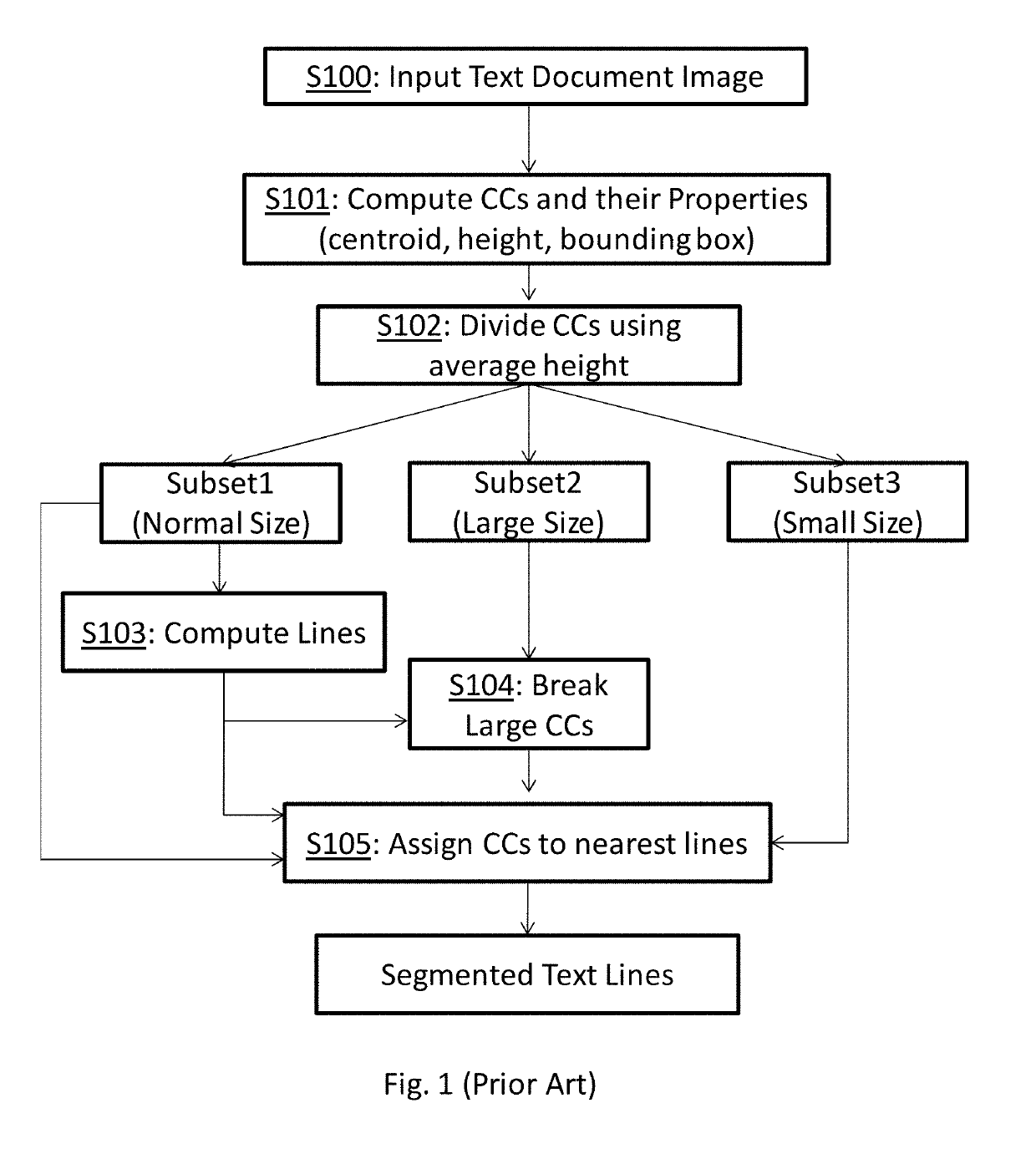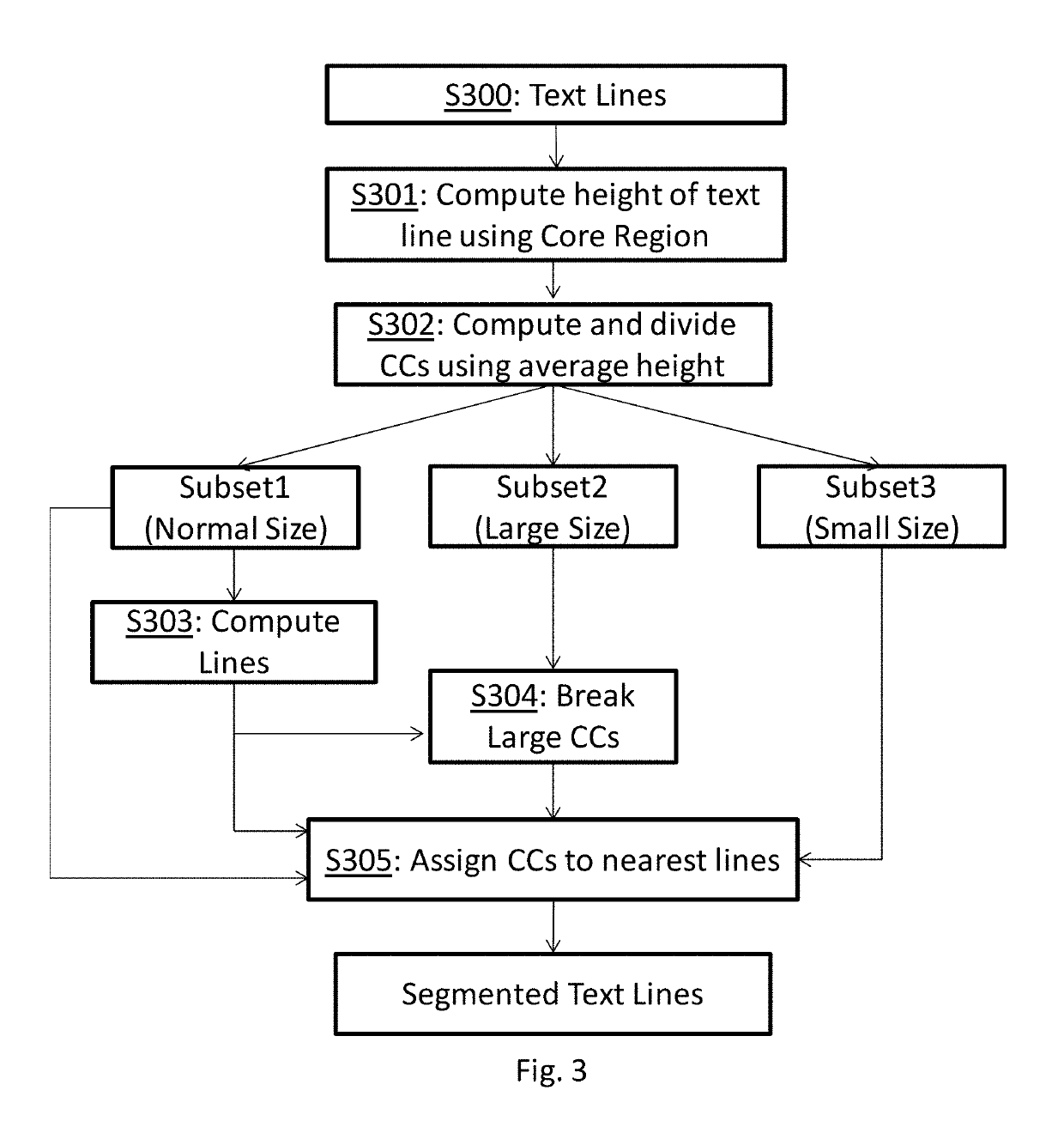Text line segmentation method
a text line and segmentation technology, applied in the field of document image processing, can solve the problems of distorted input to the word/character recognition module, wrong output, and difficulty in obtaining a general algorithm that can work well on a variety of writing samples, and achieve the effect of robust way of identifying text lines
- Summary
- Abstract
- Description
- Claims
- Application Information
AI Technical Summary
Benefits of technology
Problems solved by technology
Method used
Image
Examples
Embodiment Construction
[0026]FIG. 1 schematically illustrates a conventional line segmentation method for handwritten documents, as described in Louloudis 2009. The method starts with an input text document image (S100), which is a binary image including foreground pixels (i.e. black pixels) representing text content and background pixels (e.g. white pixels). A connected component analysis is applied to the input image to extract connected components (step S101). A connected component (CC) is a group of connected foreground pixels. The properties of the CCs, such as their centroids, bounding boxes (a CC bounding box is a rectangular box with horizontal and vertical sides that bounds a CC), and heights are computed in this step. Then, the CCs are divided into three subsets based on their sizes, using an average height of the CCs as the average character height to set the criteria for division (step S102). The three subsets are referred to as a first subset for normal size, a second subset for large size, a...
PUM
 Login to View More
Login to View More Abstract
Description
Claims
Application Information
 Login to View More
Login to View More - R&D
- Intellectual Property
- Life Sciences
- Materials
- Tech Scout
- Unparalleled Data Quality
- Higher Quality Content
- 60% Fewer Hallucinations
Browse by: Latest US Patents, China's latest patents, Technical Efficacy Thesaurus, Application Domain, Technology Topic, Popular Technical Reports.
© 2025 PatSnap. All rights reserved.Legal|Privacy policy|Modern Slavery Act Transparency Statement|Sitemap|About US| Contact US: help@patsnap.com



